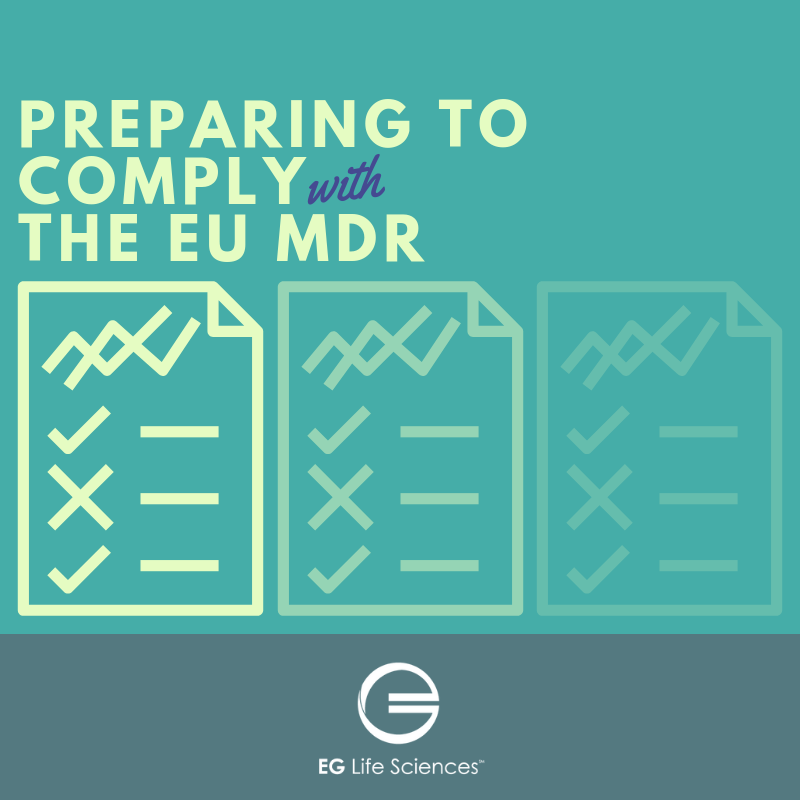WHAT IS IT?
The European Union put a new MDR, or Medical Devices Regulation, into effect on May 25, 2017. The MDR replaces both the former Medical Devices Directive and the Active Implantable Medical Devices Directive. The new regulation has a transition period of three years, during which time manufacturers are expected to revise their internal production processes and related technical documentation to align with the new requirements put into effect by the MDR.1,2 Ideally, the replacement of the MDD with the MDR will encourage a greater universal compliance to stricter standards throughout Europe of regulations related to medical devices.
In describing the purpose of the MDR, the Official Journal of the European Union explains:
“This Regulation aims to ensure the smooth functioning of the internal market as regards medical devices, taking as a base a high level of protection of health for patients and users, and taking into account the small- and medium-sized enterprises that are active in this sector… At the same time, this Regulation sets high standards of quality and safety for medical devices in order to meet common safety concerns as regards such products.”3
Thus, the MDR is intended to both ensure patient safety and use of all medical devices, while also working to further improve the functioning and processes of the industry in general. In consideration of smaller medical device creators and manufacturers, a lengthy transition period has been granted to all companies, during which time the required changes to process may be steadily implemented.
Ultimately, the MDR calls for a number of changes that will significantly impact the process and priorities of medical device companies, with a reinforced focus on patient safety that may perhaps even carry larger implications for the biomedical industry as a whole. These changes will almost certainly impact device classification and increase the ever-present need for clinical data. Any organizations affected by the MDR must begin to take steps now to adhere to these new requirements.
WHAT DOES THIS MEAN?
In short, all medical devices certified under the MDR will be held to its requirements. Further, devices not conforming to the MDR must be modified to meet the new specifications, or else they will be removed from the market at the end of the transition period. The MDR also requires manufacturers to implement and prove they operate with an effective QMS, which must be implemented within the transition period.
As explained in the regulation itself,
“Key elements of the existing regulatory approach, such as the supervision of notified bodies, conformity assessment procedures, clinical investigations and clinical evaluation, vigilance and market surveillance should be significantly reinforced, whilst provisions ensuring transparency and traceability regarding medical devices should be introduced, to improve health and safety.”3
HOW TO PREPARE
All medical device manufacturers are expected to plan to implement new requirements through a transition audit, and correct and adjust processes and protocol as needed in order for all devices to remain certified to the standard. It is absolutely essential to plan enough time for such an audit and any corrective measures that need to be taken as a result of such an audit.6
At the minimum, you must execute your plan and understand how big of a gap you have to fill between now and the end of the transition period. This will inform the extent to which your products must be tweaked and altered. It will be impossible to meet the March deadline if you do not devise a plan to be put into action immediately.
BEGIN PREPARING NOW
Although the MDR was published in May 2017, the regulations will not be in effect until Wednesday, May 26, 2021, which gives medical device companies the time needed to self-audit and correct practices in order to achieve compliance. The first step to compliance is to assess your current practices: A thorough gap analysis will provide you and your team with a task list for updating your procedures, processes, and documentation.
The EG Life Sciences team can help. Connect with us to begin your gap analysis today!
References
- BSI Medical Devices. Medical Devices Regulation FAQs. https://www.bsigroup.com/meddev/LocalFiles/en-GB/Documents/BSI-MD-MDR-FAQ-UK-EN.pdf. Accessed August 27, 2018.
- BSI Medical Devices. New Medical Devices Regulation Now Published. https://www.bsigroup.com/en-US/medical-devices/Our-services/MDR-Revision/. Accessed August 27, 2018.
- Official Journal of the European Union. Regulation (EU) 2017/745 of the European Parliament And of the Council of 5 April 2017 on medical devices, amending Directive 2001/83/EC, Regulation (EC) No 178/2002 and Regulation (EC) No 1223/2009 and repealing Council Directives 90/385/EEC and 93/42/EEC. https://eur-lex.europa.eu/legal-content/EN/TXT/PDF/?uri=CELEX:32017R0745. Accessed August 27, 2018.
- Greenlight Guru. 7 Questions about the European MDR Answered. https://www.greenlight.guru/blog/7-questions-about-european-mdr-answered. Accessed August 27, 2018.
- MedTech Europe. TGA Consultation – Alignment with European medical device regulatory Framework: MedTech Europe Submission – August 2017. https://www.tga.gov.au/sites/default/files/consultation-submission-alignment-european-medical-device-regulatory-framework-medtech.pdf. Accessed August 27, 2018.
- BSI Medical Devices. Your ISO 13485:2016 transition toolkit. https://www.bsigroup.com/meddev/LocalFiles/en-GB/Services/BSI-md-ISO-13485-2016-Transition-Toolkit.pdf. Accessed August 27, 2018.
- BSI Medical Devices. BSI Transitions: Medical Devices Regulation. https://www.bsigroup.com/meddev/LocalFiles/en-GB/Documents/BSI-MDR-Mapping- Guide.pdf. Accessed September 3, 2018.

